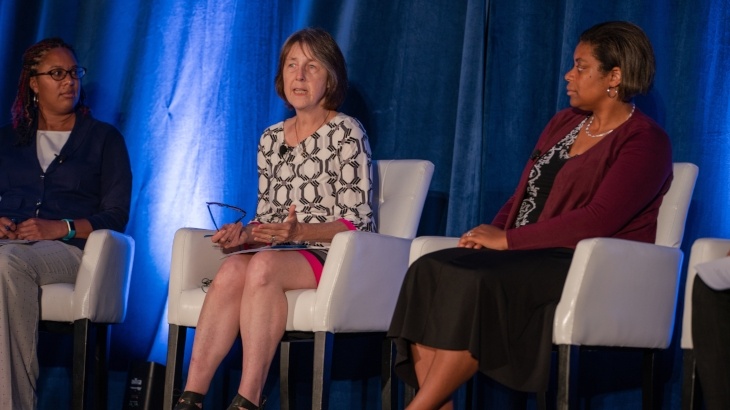
CEC Commissioner Janea Scott, Sen. Nancy Skinner, and CPUC Commissioner Carla Peterman, on the Pathway to 2050 main stage.
The wildfires raging to the north and west gave the air in Sacramento a pungent haze and added poignancy to the conversations at this year’s Pathway to 2050. AEE’s sixth annual conference on California policy focused as it usually does on the big ticket energy topics of the day: the push toward 100% clean electricity, regionalization of the western power grid, new utility business models, transportation electrification. But in the background – and on the tip of everyone’s tongues – was the now year-round threat presented by California’s parched landscape, a threat now extending to the solvency of one of the state’s investor-owned utilities. Also in the background was another challenge to California: the announced rollback of federal auto standards for emissions and fuel efficiency, and attempted withdrawal of California’s longstanding right to set higher standards, including requirements for zero-emission vehicle sales, for itself and more than a dozen states that follow along. But none of this threw Pathway off track. If anything, the challenges from a warmer, drier climate and from Washington, D.C., gave the conference’s core purpose of economic transformation through advanced energy even more urgency.